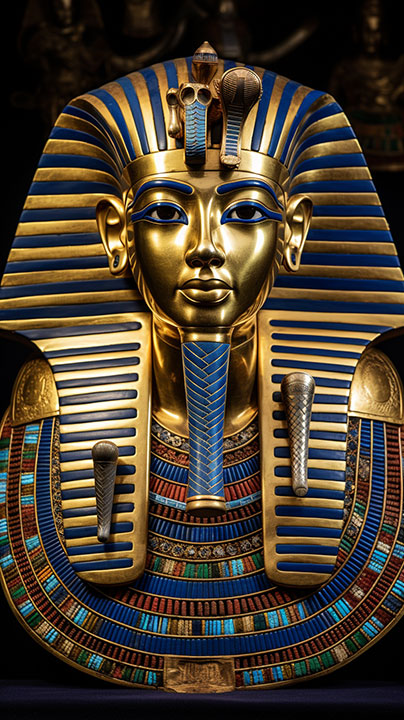A Glimpse Into the Opulence of Ancient Egyptian Royalty - Luxuries of Pharaoh Tutankhamun
- 18th Oct 2023
- 2186
- 0

Echoes of Divinity: The Lustrous Treasures of Egypt
The ancient Egyptians are one of the most fascinating cultures in history. The tomb of Tutankhamun, a youthful king whose brief reign belied the riches and luxury he experienced, encapsulates Egypt's heritage as a nation of pyramids, pharaohs, and unrivalled magnificence.The Definition of Luxury in Ancient Egypt
Luxury in ancient Egypt wasn't just about material possessions; it was a reflection of power, divinity, and eternity. The pharaohs, as divine rulers, had unparalleled access to the world's most opulent goods. Gold, silver, precious gems, and exotic materials weren't just adornments; they were symbols of a pharaoh's god-like status on Earth.
Treasures of the Pharaohs
Jewelry: The intricate jewelry worn by the pharaohs and their consorts was more than mere decoration. Pieces like Tutankhamun's death mask, crafted from gold and inlaid with semi-precious stones and colored glass paste, were emblematic of the pharaoh's divine status. This 22-pound masterpiece, with eyes of obsidian and quartz, is a testament to the craftsmanship of ancient Egyptian artisans.
Furniture: Beyond functionality, the furniture in a pharaoh's palace was a statement of luxury. Crafted from rare woods like ebony and cedar, and often inlaid with gold, silver, and gems, each piece was a work of art.
Clothing: The fine linen garments of the pharaohs, often adorned with intricate embroidery and beads, were a mark of their exalted status.
Gastronomy: The royal table was a cornucopia of the finest foods from Egypt and beyond, showcasing the vast reach of the pharaohs.
Transport: Whether traveling by chariot or boat, the pharaohs did so in style. Their gold and silver chariots and elaborately decorated boats were as much a symbol of their power as they were modes of transport.
Beyond Material Possessions
The treasures of the pharaohs were not just about opulence. They were deeply intertwined with religious beliefs. The Egyptians believed that the afterlife was a continuation of one's earthly existence. Thus, the tombs of the pharaohs were stocked with all they would need for eternity. This belief is evident in the inscriptions and artwork in their tombs, designed to guide them in the afterlife.
The Discovery that Captivated the World
When Howard Carter and his team unearthed King Tutankhamun's tomb in 1922, the world was given an unprecedented look into the lavishness of ancient Egyptian royalty. Though Tutankhamun was a relatively minor pharaoh, his tomb was a treasure trove. From the iconic death mask to game boards made of ivory, each artifact offered a glimpse into the life of a young king and the opulent world he inhabited.
Among the treasures was a spell from the Book of the Dead, inscribed in hieroglyphs on the back of the death mask and on Tutankhamun's third innermost coffin. This spell was believed to ensure the mask functioned as the face of the deceased in the afterlife.
A Game of Divinity
Interestingly, Tutankhamun's tomb contained several board games, including the "game of twenty" and "senet." These games, some made of ivory, were not just pastimes but were deeply symbolic, reflecting the journey of the soul in the afterlife.
Conclusion

The treasures of Tutankhamun's tomb are more than just artifacts; they are a window into a civilization that revered its rulers as gods and believed in an eternal life filled with luxury. As we reflect on the opulence of ancient Egyptian royalty, we are reminded of the timeless allure of luxury and the lengths to which humanity will go to immortalize its leaders.
 Pradeep Dhuri
Pradeep Dhuri


Comments
No comments yet.
Add Your Comment
Thank you, for commenting !!
Your comment is under moderation...
Keep reading luxury post